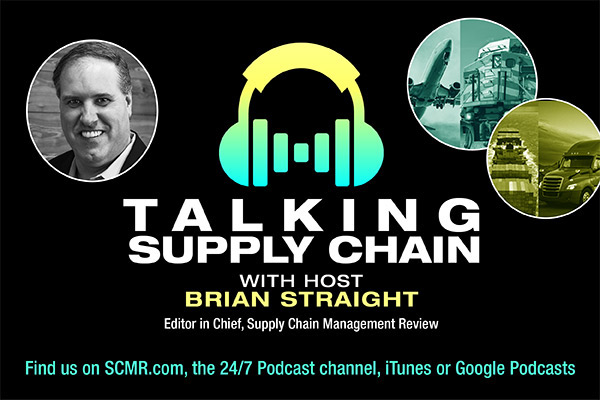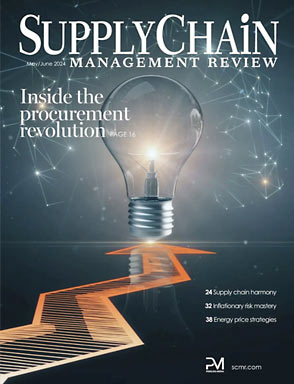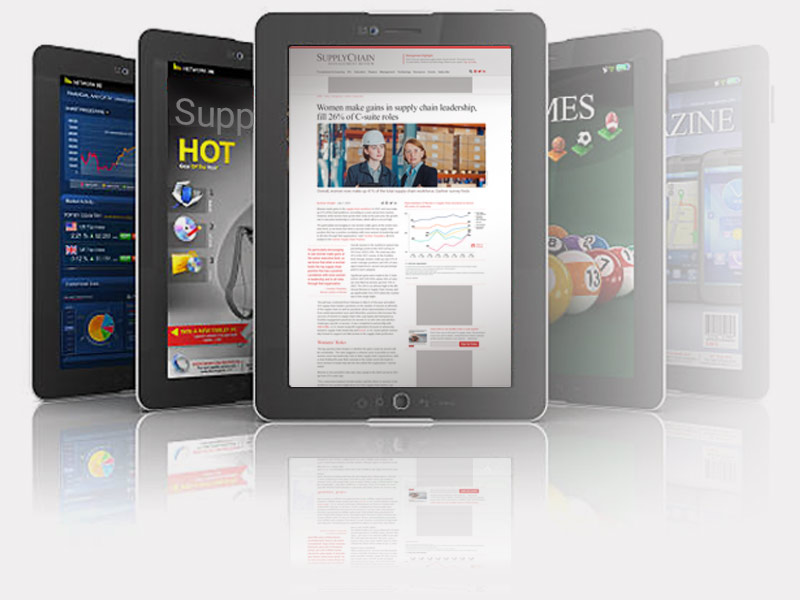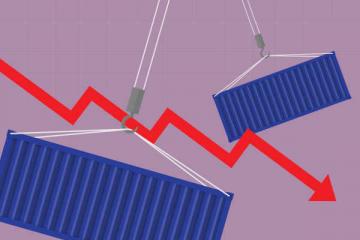Supply chain challenges arising from the COVID-19 pandemic and Russia’s invasion of Ukraine could result in a potential €920 billion cumulative loss to gross domestic product (GDP) across the Eurozone by 2023, according to a report released by Accenture. The potential loss equates to 7.7% of the Eurozone GDP in 2023.
Published at the World Economic Forum’s Annual Meeting in Davos, the report, “From Disruption to Reinvention – The future of supply chains in Europe,” explores three possible scenarios for how the war could play out over the coming year, modelling the impact of each scenario on the Eurozone region in terms of costs and timelines for recovery. Download the full report here.
Supply chain disruption related to COVID-19 cost Eurozone economies €112.7 billion in lost GDP in 2021, according to the report. Before the war, the lack of material supplies, breakdowns in logistics and inflationary pressures were already undermining the economic rebound in Europe, with resurging demand and precautionary hoarding overwhelming supply chains.
Russia’s invasion of Ukraine has aggravated the situation. For instance, the semiconductor shortfall, which was expected to resolve in the second half of 2022, is now anticipated to persist into 2023. A protracted war could lead to a further loss to GDP of up to €318 billion in 2022 and €602 billion in 2023, while inflation could be as high as 7.8% in 2022 before declining in 2023.
“Although expert consensus is that Europe will avoid recession this year, the combination of COVID-19 and the war in Ukraine has the potential to significantly impact Europe’s economy, causing a material deceleration in growth,” said Jean-Marc Ollagnier, CEO of Accenture in Europe. “While before the war some kind of supply chain normalization was expected in the second half of 2022, we now don’t expect this to happen before 2023, perhaps not even until 2024, depending on how the war evolves.”
Solving supply chain issues will be critical to European competitiveness and growth. According to the report, up to 30% of total Eurozone value-added relies on functioning cross-border supply chains, either as a source of input or as a destination for production.
Reinventing supply chains in a new economic order
The report suggests that a reinvention of supply chains is required to address a paradigm shift — supply chains were designed mainly to optimize costs, while in today’s world, they must also be more resilient and agile to respond to increasing supply uncertainties, while becoming a key competitive advantage to enable future growth. A focus on three key areas is highlighted:
•Resilience: Supply chains must be able to absorb, adapt to and recover from disruptions whenever and wherever they occur. Improved dynamic visibility, risk identification, and mitigation solutions will enable companies to respond to sudden supply chain changes. Scenario planning and risk and opportunity analyses will help them adapt to evolving supply and demand. Network modeling and simulation, stress tests, strategic buffer sizing, and multi-sourcing options will allow organizations to manage uncertainties.
•Relevance: Supply chains will need to be customer-centric and agile so they can quickly and cost-effectively adapt to changes in demand. Capturing new data sets, including real-time data, from inside and outside the organization and across the value chain will be critical. Automation and artificial intelligence will allow organizations to identify new data patterns rapidly to better inform decision-making. Moving from centralized, linear models of supply to decentralized networks that use on-demand production, and in some instances, bringing production closer to the point of sale, can help organizations better meet customer expectations for order fulfilment.
•Sustainability: Modern supply chains need to support, if not accelerate, organizations’ sustainability agendas. To gain the trust of stakeholders, organizations must make their value chains transparent; one way to do this is through blockchain or similar technology. A shift from linear processes to closed-loop, circular processes that minimize waste will also be key.
“Visibility across the supply networks, including tier 2 and tier 3 suppliers is critical,” said Kris Timmermans, who leads Accenture’s Supply Chain & Operations practice. “Companies must move from a just-in-time to a just-in-case approach, diversifying supply bases, planning alternative freight routes, making distribution centers flexible and building inventory. It comes at a price, but it is an ‘insurance policy’ against future shocks. The key is investing in new technologies to better use data — from digital twins and analytics to supply chain control towers — across the cloud continuum, which provides vast computing power in a cost-effective, flexible and sustainable way.”
SC
MR

Latest Supply Chain News
- Technology’s role in mending supply chain fragility after recent disruptions
- Tech investments bring revenue increases, survey finds
- Survey reveals strategies for addressing supply chain, logistics labor shortages
- Israel, Ukraine aid package to increase pressure on aerospace and defense supply chains
- How CPG brands can deliver on supplier diversity promises
- More News
Latest Podcast

 Explore
Explore
Latest Supply Chain News
- Technology’s role in mending supply chain fragility after recent disruptions
- Tech investments bring revenue increases, survey finds
- Survey reveals strategies for addressing supply chain, logistics labor shortages
- Israel, Ukraine aid package to increase pressure on aerospace and defense supply chains
- How CPG brands can deliver on supplier diversity promises
- How S&OP provides the answer to in-demand products
- More latest news
Latest Resources

Subscribe

Supply Chain Management Review delivers the best industry content.

Editors’ Picks





